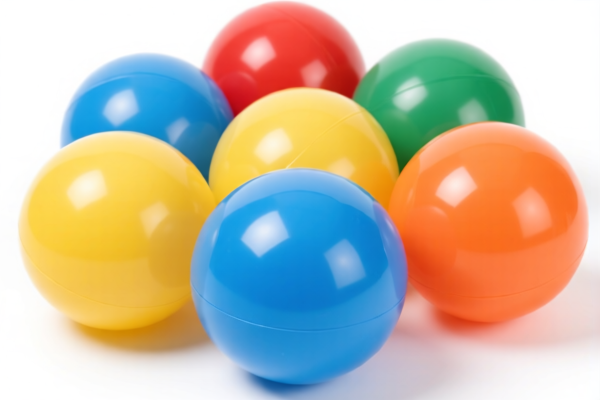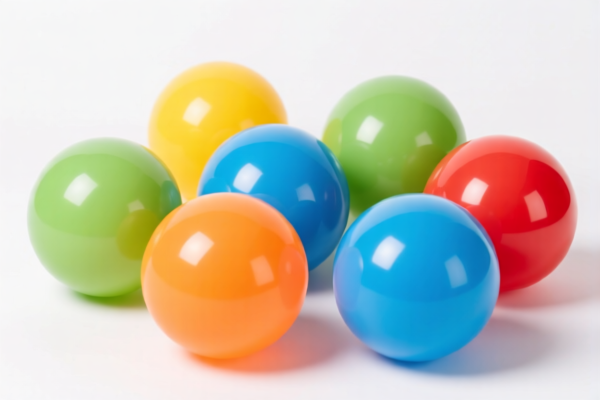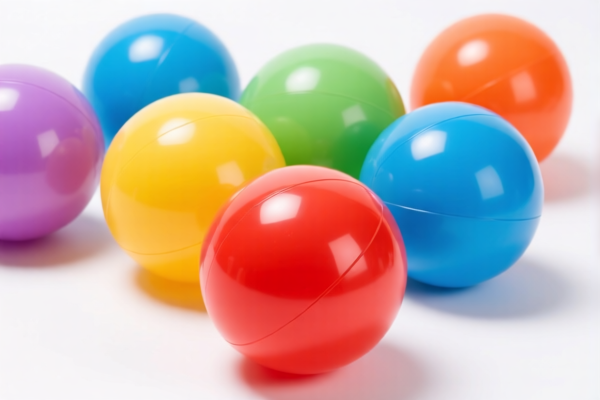| HS Code | Official Doc | Tariff Rate | Origin | Destination | Effective Date |
|---|---|---|---|---|---|
| 3926903000 | Doc | 59.2% | CN | US | 2025-05-12 |
| 3926909905 | Doc | 42.8% | CN | US | 2025-05-12 |
| 3921190090 | Doc | 61.5% | CN | US | 2025-05-12 |
| 4823901000 | Doc | 55.0% | CN | US | 2025-05-12 |
| 4823907000 | Doc | 55.0% | CN | US | 2025-05-12 |
| 4821904000 | Doc | 55.0% | CN | US | 2025-05-12 |
| 4821902000 | Doc | 55.0% | CN | US | 2025-05-12 |




Foam Ball
A foam ball is a sphere constructed from foam material, typically used for recreational, sporting, or craft purposes.
Material
Foam balls are commonly made from:
- Polyethylene Foam (PE): Lightweight, inexpensive, and commonly used in children's toys and general play. Offers limited durability.
- Polystyrene Foam (PS): Very lightweight and inexpensive, often used for craft projects or temporary applications. Brittle and easily damaged.
- Polyurethane Foam (PU): More durable and dense than PE or PS foam, suitable for sporting applications or repeated use. Can be open-cell or closed-cell, impacting water resistance and density.
- EVA Foam (Ethylene-vinyl acetate): Softer and more flexible than other foams, offering good impact absorption. Frequently used in children's play and safety equipment.
Purpose & Function
The primary function of a foam ball is to provide a soft, lightweight projectile or object for various activities. This reduces the risk of injury compared to harder balls.
- Recreation & Play: Used for indoor games, soft tossing, and general play, particularly with children.
- Sporting Applications: Employed in non-impact sports or training exercises. Examples include dodgeball variations, target practice, or agility drills.
- Crafts & Decoration: Utilized in art projects, DIY decorations, or as components in larger structures.
- Pet Toys: Popular as interactive toys for dogs and other pets.
- Packaging: Used as cushioning material in packaging to protect fragile items.
Usage Scenarios
- Indoor Playrooms: Safe for use in confined spaces where hard balls might cause damage or injury.
- Gymnasiums & Sports Facilities: For low-impact training and warm-up exercises.
- Schools & Daycares: For supervised play and educational activities.
- Arts & Crafts Workshops: As a base material for creating sculptures, decorations, or models.
- Dog Parks & Backyards: For fetch and interactive play with pets.
Common Types
- Solid Foam Balls: A single, homogenous piece of foam.
- Hollow Foam Balls: Lighter in weight, often used for games requiring greater distance.
- Textured Foam Balls: Feature a rough surface for enhanced grip.
- Painted Foam Balls: Available in a variety of colors and designs for decorative or craft purposes.
- Glitter Foam Balls: Incorporated with glitter for aesthetic appeal.
- Nerf Balls: A specific brand of foam ball designed for Nerf blasters and games.
- Dog Training Balls: Durable foam balls designed to withstand chewing and repeated use by dogs.
Based on the provided information, classifying "foam ball" requires careful consideration of its material and intended use. Here's a breakdown of potentially relevant HS codes:
- 3926903000: This code covers “Other articles of plastics and articles of other materials of headings 3901 to 3914: Other: Parts for yachts or pleasure boats of heading 8903; parts of canoes, racing shells, pneumatic craft and pleasure boats which are not of a type designed to be principally used with motors or sails”. If the foam ball is specifically a part used in the construction or repair of these types of watercraft, this code may be applicable. The total tax rate is 59.2% (Base tariff: 4.2%, Additional tariff: 25.0%, Post 2025.4.2 Additional tariff: 30%).
- 3926909905: This code covers “Other articles of plastics and articles of other materials of headings 3901 to 3914: Other: Other Elastic bands made wholly of plastics”. If the foam ball is made entirely of plastic and functions as an elastic band, this code could be relevant. The total tax rate is 42.8% (Base tariff: 5.3%, Additional tariff: 7.5%, Post 2025.4.2 Additional tariff: 30%).
- 3921190090: This code covers “Other plates, sheets, film, foil and strip, of plastics: Cellular: Of other plastics Other”. If the foam ball is made of cellular plastic material (foam) and is in the form of a sheet, film, or strip, this code may apply. The total tax rate is 61.5% (Base tariff: 6.5%, Additional tariff: 25.0%, Post 2025.4.2 Additional tariff: 30%).
According to the provided reference material, the HS code options related to 'foam ball' are limited, with only the following 3 found.
It is important to determine the precise material composition and intended use of the foam ball to ensure accurate classification. If the foam ball is made of paper pulp, cellulose wadding, or webs of cellulose fibers, HS codes 4823901000 or 4823907000 may be applicable. If it is a paper or paperboard label, HS codes 4821904000 or 4821902000 may be relevant.
Customer Reviews
No reviews yet.